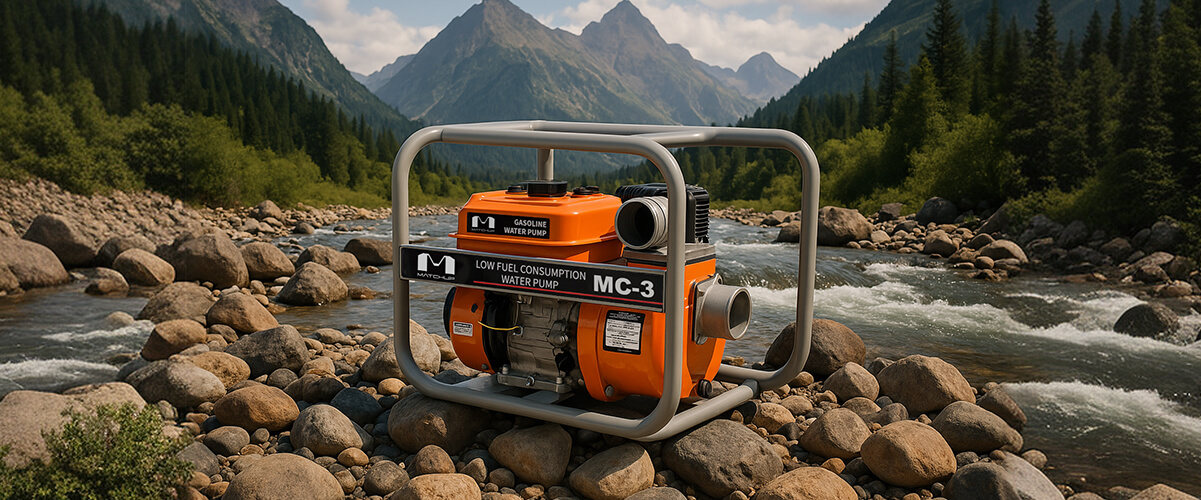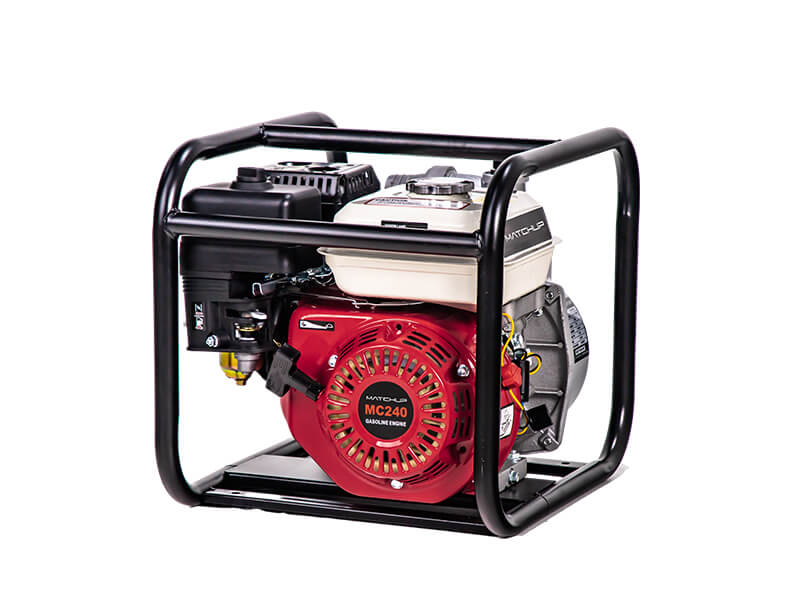
clean water pumps
MATCHUP, a trusted OEM in China, specializes in high-quality clean water pumps designed for industrial, commercial, and agricultural applications. Whether for irrigation, water transfer, or supply systems, our advanced technology ensures smooth operation with minimal maintenance.
OEM/ODM water pump manufacturers
clean water pump manufacturers and suppliers
When moving clean water efficiently, you need a pump that delivers consistent performance, durability, and reliability. At MATCHUP, we focus on precision engineering, robust construction, and energy efficiency to provide cost-effective solutions for your water management needs. Our wide range of clean water pumps, backed by competitive wholesale prices and exceptional customer support, ensures a reliable solution. Contact us today to find the perfect pump for your application!


professional water pumps manufacturer
Clean water pump applications
Clean water pumps are essential equipment in a wide range of industries and environments where the delivery of pure water is critical. Their efficiency, reliability, and high flow handling capabilities ensure that clean, reliable water is available in residential, community, and industrial settings. These pumps play a key role in streamlining everyday tasks, improving efficiency, and sustainability. Let’s explore their applications in detail.
Home water supply
Clean water pumps are commonly used for domestic water supply. Whether for drinking, cooking, or bathing, they ensure that fresh water is always available, even in off-grid areas.
Well water extraction
In areas where wells are available, clean water pumps bring water to the surface, which is faster and more convenient than carrying it manually. These pumps provide clean water to rural, remote areas, or areas where municipal water supply is insufficient.
Industrial processes
Industrial processes use clean water pumps for processes such as cooling systems, boiler feed, and manufacturing. Large-capacity centrifugal pumps are used to supply water to factories, power plants, and refineries. Maintaining a steady flow of water is essential for production efficiency and equipment life.
Municipal water supply
Municipalities use clean water pumps to deliver drinking water to residential and commercial areas. These pumps help maintain water pressure in municipal water networks, ensuring that clean water reaches homes, offices, and public facilities. They also play an important role in wastewater treatment plants, returning treated water to the environment or for reuse.
Construction and commercial uses
Construction sites and commercial establishments rely on clean water pumps for water supply and water pressure management. High-rise buildings, hotels, hospitals, and shopping malls require powerful booster pumps to deliver water to all floors. Pumps also supply water for concrete pouring, dust suppression, and other on-site activities. In addition, they circulate and filter water in swimming pools, fountains, and decorative water features.
Agricultural Irrigation
Clean water pumps are widely used in agriculture. Farmers use clean water pumps for drip irrigation, sprinkler systems, and large-scale water distribution. By providing a reliable source of water, these pumps support food production, increase crop yields, reduce dependence on rainwater, and ensure that agriculture continues during the dry season.
clean water pump buying guide
A clean water pump is a mechanical device designed to move water free of debris, sediment, or large particles. These pumps are frequently used in commercial, industrial, residential, and agricultural settings where the water source is pure and doesn’t require extensive filtration, such as providing safe drinking water, supporting agricultural irrigation, and enabling industrial processes.
Unlike wastewater or sludge pumps, clean water pumps focus on efficiently moving water with minimal wear and tear on internal components. If the water contains sand, silt, or debris, sump pumps or sewage pumps are better suited to prevent clogging and damage.

Key features and components of clean water pumps
Understanding the key features and components of clean water pumps helps ensure that you choose the right pump for your needs. Let’s break down the important parts that make these pumps work efficiently and reliably.
Pump mechanisms
The mechanism inside a clean water pump allows it to move water effectively. Here are the key types:
Suction systems
Suction systems draw water into the pump. When activated, the pump creates a vacuum that pulls water from a source (like a well or reservoir) into the pump. This system is crucial for lifting water, especially from lower levels, ensuring the pump efficiently pulls water up to the surface.
Pressure systems
Pressure systems push the water out of the pump and into the desired location, whether it’s a household, irrigation system, or storage tank. These systems ensure the water is delivered at the right pressure to reach its destination, whether at a higher elevation or over a long distance.
Filtration components
Some clean water pumps include filtration systems that remove impurities, making the water cleaner before it’s pumped. These filters trap dirt, debris, and other contaminants, ensuring the water moved is as clean as possible. Filtration components are especially important where water quality may be a concern.
Important factors to consider when picking a clean water pump
Finding the right clean water pump requires considering several factors to ensure efficiency, durability, and optimal performance. This guide breaks down the important things to think about, helping you find the pump that fits your needs.
Water source
The type of water source plays an important role in pump selection. Consider these factors:
- Depth: How deep is your water source (well, river, or reservoir)? Deeper water will require a more powerful pump to bring it up.
- Distance: How far does the water need to be moved? Longer distances may require a pump with higher pressure to push water efficiently.
- Water quality: If the water contains sediment, dirt, or debris, you’ll need a pump with filtration or one that can handle rough water conditions.
Flow rate and pressure requirements
These indicate how much water you need and how forcefully it should be delivered.
- Flow rate (capacity): This is the amount of water moved per minute (L/min or GPM). Large-scale irrigation or industrial use requires higher flow rates, while domestic or small commercial use needs less.
- Pressure (head): The “head” is the maximum vertical distance a pump can raise water. For pumping to high points like water towers or upper floors, a pump with sufficient head is essential to maintain proper pressure.
Make sure your pump can handle both the flow rate and pressure required for your setup.
Power availability
Consider the power source for your pump:
- Electricity: Electric pumps are efficient and easy to use but require a steady power supply. Ideal for homes or commercial buildings with reliable electricity.
- Fuel (gasoline or diesel): Suitable for remote locations or heavy-duty applications where electricity isn’t reliable.
- Solar power: Environmentally friendly and cost-effective in the long run, especially for off-grid areas with good sunlight. Solar pumps depend on sunlight availability.
Materials and durability
The materials and construction determine how durable, reliable, and easy to maintain a pump will be. Look for pumps made from strong materials like cast iron, stainless steel, or high-quality plastics designed to withstand wear and corrosion. Besides, pumps used in harsh environments or for continuous operation must have durable seals, impellers, and housings that can withstand wear and tear. Stainless steel or coated components protect against rust, helping the pump function well over time, even in moist or harsh environments. A good pump saves you money on repairs and replacement by lasting longer.
Head and total dynamic head (TDH)
The term head refers to the height the water must be lifted or the pressure needed. To calculate this, you need to consider:
- Elevation difference: The vertical distance between your water source and where the water needs to go (e.g., from a well to your home). This is the “head height.”
- Friction losses: Water flowing through pipes or hoses loses pressure due to friction. The longer and narrower the pipes, the higher the friction losses.
The total dynamic head (TDH) combines both elevation and friction loss to determine how powerful a pump you need. Your pump’s specifications should match or exceed the TDH required for your system.
Budget
When choosing a pump, your budget will affect both initial costs and ongoing expenses:
- Initial costs: Manual pumps are typically cheaper upfront, while electric and solar pumps tend to have higher initial costs but can save money in the long run.
- Maintenance: Consider how much maintenance the pump will need over time. Manual pumps usually need less maintenance than powered pumps.
- Energy usage: Powered pumps (especially electric and solar) have ongoing costs related to electricity or maintenance. Solar pumps have no energy cost but may have a higher upfront cost.
Noise level
Some pumps, such as centrifugal and booster pumps, operate with minimal noise, while others, such as jet pumps, can produce more noise. Choosing a quiet operating pump is essential if noise is a concern, especially for residential or indoor installations.
Self-priming capability
Self-priming pumps can remove air from the suction line and start pumping without manual intervention. This feature is handy for applications where the pump is frequently turned on and off, preventing operational delays and potential damage from dry running.
Energy efficiency
Energy-efficient pumps use less electricity while providing maximum performance. Choosing a pump with a high-efficiency motor helps reduce operational costs, making it an economical long-term investment.
Ease of maintenance
A pump with accessible parts and a user-friendly design makes maintenance and servicing easier. Look for models with replaceable seals, easy-to-clean filters, and reliable warranties to ensure long-term use with minimal downtime.
Easy maintenance ensures your pump continues to work smoothly without requiring too much time or effort to keep it in good condition.
Safety features
Some pumps have built-in safety features such as thermal overload protection, automatic shut-off, and dry-run prevention. These features help prevent motor damage, overheating, and operational failures, ensuring longevity and reliability.
Conclusion
Clean water pumps are essential tools that ensure reliable access to clean water for residential use, agriculture, and community systems. They play a crucial role in daily life by providing water where it’s needed most, enhancing efficiency, and promoting sustainability.
At our company, MATCHUP is committed to offering high-quality, reliable clean water pumps that meet the diverse needs of our customers. Whether you need a durable gasoline pump or an energy-efficient powered pump, our products are designed to perform well in various environments and last for years.
Consider investing in a clean water pump from our brand today and experience the reliability, performance, and quality our pumps offer. Let us help you secure a dependable water supply for your home, farm, or community.
about clean water pumps, people also want to know:
Why is my clean water pump losing pressure?
Air leaks, clogged filters, broken seals, improper pipe sizing, or pump wear can cause pressure loss. Air entering the system through loose fittings or damaged seals reduces the pump’s ability to maintain pressure. Clogged or dirty filters restrict water flow, lowering output pressure. Incorrect pipe sizing can create excessive friction losses, which also reduce pressure. Over time, worn pump components such as impellers or valves may fail to generate adequate pressure. Regular inspection and maintenance are essential to identify these issues early. Cleaning or replacing faulty parts and ensuring proper installation can restore your pump’s performance and prevent further pressure loss.
How do I install a clean water pump?
Mount the pump on a stable surface, ensure the correct pipe sizing, connect it to a clean water source, prime it if necessary, and secure all electrical or fuel connections. Always follow the manufacturer’s instructions for proper installation.
- Choose the right location: Install the pump on a stable, level surface to prevent vibrations that could cause damage. Make sure the area is dry, ventilated, and easily accessible for maintenance.
- Ensure adequate power supply: Check that the pump’s voltage and power requirements match your power supply. If using a fuel-powered pump, ensure adequate ventilation to prevent harmful emissions.
- Install a secure water connection: Connect the pump to a clean, debris-free water source to prevent clogging. Use a strainer or filter to block sediment or small particles from entering the pump.
- Use the correct pipe size: Select pipes that match the pump inlet and outlet sizes to maintain proper flow and pressure. Using smaller pipes can cause excessive friction and reduce efficiency.
- Prime the pump before the first use: If the pump is not self-priming, manually fill it with water before starting. Running the pump dry can cause serious damage to the motor and internal parts.
- Install a check valve if necessary: A check valve prevents backflow and helps maintain suction. This is especially important for deep wells or submersible pumps.
Does a clean water pump require maintenance?
Regular maintenance is necessary. A high-quality clean water pump can last 5 to 15 years, but depends on use, maintenance, and environmental conditions.
- Regularly inspect for leaks and wear: Check hoses, seals, and connections for leaks or cracks. Replace any worn parts to prevent operational failures.
- Clean filters and strainers: Clean your pump’s strainer or filter frequently to avoid blockages that could lower water flow and damage the device.
- Monitor pressure and flow rate: Sudden drops in pressure or flow may indicate blockages, leaks, or pump wear. Check the pressure gauge regularly and adjust as needed.
- Lubricate moving parts: If the pump has bearings or other moving components, lubricate them according to the manufacturer’s recommendations to reduce friction and wear.
- Check the motor and electrical components: Inspect wires, terminals, and motor housing for signs of overheating or corrosion. Ensure all electrical connections are secure and free of moisture.
- Drain and store appropriately in cold weather: Drain the pump before storing it in freezing conditions to prevent ice damage. Store the pump in a dry location or use antifreeze if necessary.
- Schedule professional service: Regular professional servicing can help identify possible issues before they cause breakdowns, especially if the pump is used frequently or for heavy-duty applications.







